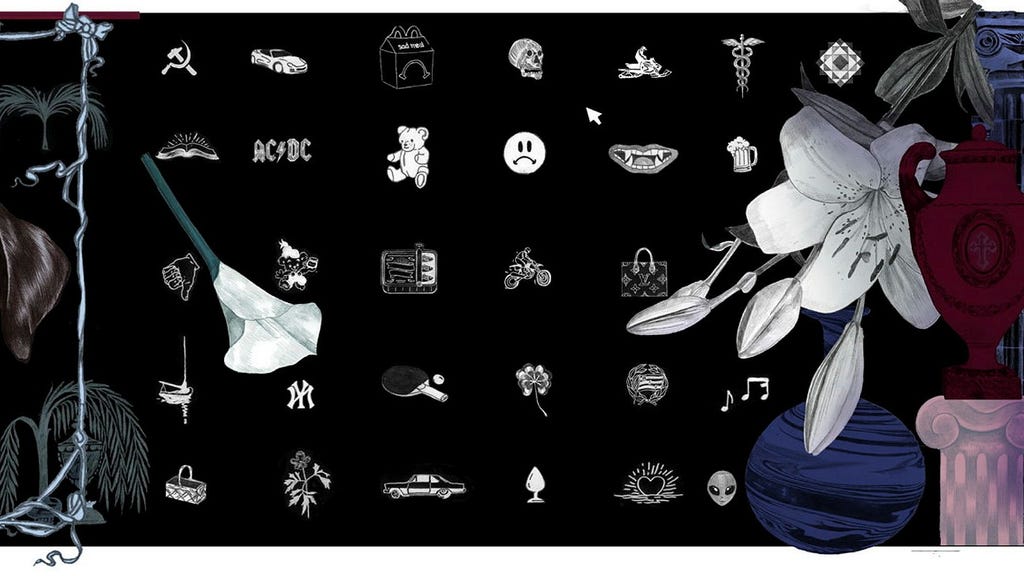The author embarked on an unusual project: reading four thousand obituaries. This experience, initially driven by curiosity, transformed into a profound reflection on life, death, and the stories we tell about ourselves. The sheer volume of grief and remembrance challenged the notion of uniformity in death, revealing instead a vibrant mosaic of individual lives, each summarized in unique and creative ways in their final notices. From television antennas and snuff boxes to rock band logos, the symbols chosen to accompany these announcements spoke volumes about the passions and personalities of the deceased.
Intrigued by the stories behind these symbols, the author contacted several families who shared the significance of their choices. One son described his father’s self-portrait, a drawing from the school newspaper upon his retirement, capturing his father’s whimsical personality and his impact as an art teacher who ”saved” the school careers of many students. Another family chose a drawing of the Colosseum to represent their mother’s lifelong love affair with Italy, a passion ignited during a three-year family stay and nurtured through language courses and watercolor classes in Tuscany. A third family selected a hand-drawn quilt pattern for their mother’s obituary, a symbol of her vibrant spirit and her love of quilting, reflecting a personal connection and cherished memory. These stories underscored the power of personalized symbols to encapsulate the essence of a life.
The evolution of obituaries mirrored a shift in societal attitudes towards death and remembrance. Once dominated by religious iconography, modern obituaries now feature a far greater range of personalized imagery, reflecting hobbies, passions, and professional accomplishments. This shift, beginning in 1977 with the first published obituary to feature a flower instead of a cross, signaled a move away from standardized religious symbolism towards individualized expressions of life. The author cites Joan Didion’s famous quote, ”We tell ourselves stories in order to live,” extending this concept to the afterlife, where we continue to live through the stories told about us. Obituaries become, in essence, the final chapter, the summary of a life’s narrative.
This personalization extends beyond obituaries to funerals themselves, which have become more carefully orchestrated, often incorporating personal belongings, favorite music, and portraits of the deceased. This trend reflects a desire to celebrate the individual’s unique life story, moving away from traditional somber ceremonies towards more personalized and meaningful farewells. The author ponders their own obituary, grappling with the challenge of condensing a complex life into a concise statement, acknowledging the inevitable reduction but also the beauty of the attempt to capture even a fragment of a person’s essence. Some obituaries embrace stark simplicity, like one featuring only a name and the declaration ”I am dead,” while others offer a scientific perspective, viewing death as a return to the state before birth.
The author cites the experience of Sigrid Larsén, an obituary collector who recognized the growing trend of personalized symbols replacing the traditional cross. Larsén’s collection, numbering over 2,500 obituaries, documented this evolution and highlighted the increasing desire to break free from anonymity and embrace individual expression in death notices. Similarly, Fonus, a funeral home, confirmed the enduring popularity of natural imagery, reflecting a connection to nature’s tranquility and a broader societal trend. However, they also noted the need to sometimes reject inappropriate or offensive symbols, demonstrating a line between personalization and decorum.
The decline of religious symbols, particularly the cross, in obituaries reflects not just secularization but also a potential loss of understanding of the cross’s symbolic meaning of hope and resurrection. Cristina Grenholm, a church secretary and theologian, emphasizes the church’s role in educating people about the Christian tradition, not to promote the use of the cross but to offer a framework for understanding and expressing grief within a larger context of hope and continuity. She emphasizes that tradition doesn’t necessarily conflict with individual expression but can provide a foundation for carrying hope and connecting the individual to something larger than themselves. Ultimately, the author’s deep dive into the world of obituaries offered a surprising sense of solace. By encountering the stories of the deceased, they gained a new appreciation for the enduring impact of individual lives and a sense of connection to the shared human experience. The realization that life isn’t as fleeting as it seems makes both living and dying a little easier.














